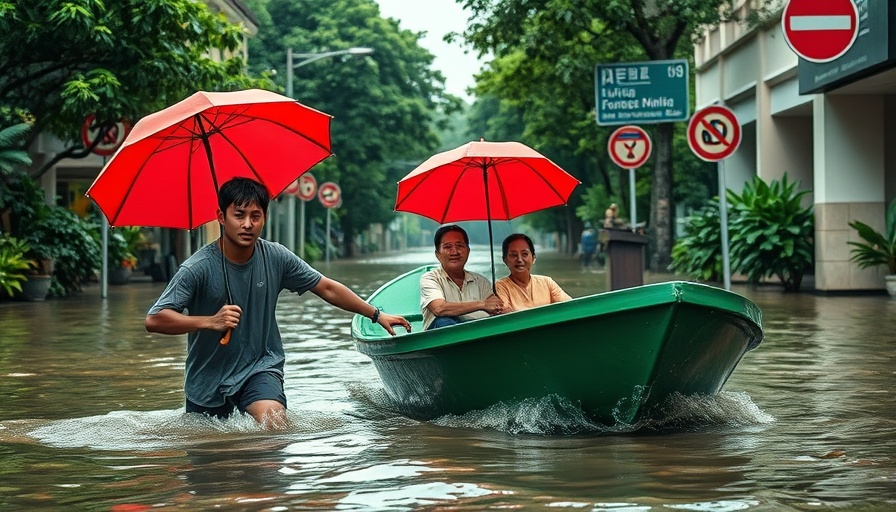
The Unfolding Climate Crisis: Transition Risks on the Rise
As the realities of climate change become increasingly apparent, investors are faced with an urgent warning: prepare for significantly heightened transition risks. Singapore's sovereign wealth fund, GIC, has released its annual report indicating a growing probability of "delayed disorderly transitions" and the unsettling likelihood of "too little too late" scenarios. These scenarios reflect the challenges of aligning investments with an uncertain future shaped by both environmentally disruptive conditions and geopolitical dynamics.
Understanding Climate Scenarios: What's at Stake?
GIC organizes its climate risk evaluations into four primary scenarios:
- Too Little Too Late: Characterized by slow and insufficient policies leading to global warming between 2°C to 3°C above pre-industrial levels.
- Delayed Disorderly Transition: A scenario where, after initial hesitance, a sudden surge in policy action limits warming to below 2°C by the end of the century.
- Failed Transition: A situation where no effective action is taken, resulting in dire environmental consequences.
- Net Zero: Achieving net-zero emissions by 2050, representing the most optimistic outcome.
With the prevailing outlook favoring a "too little too late" scenario and a rise in the likelihood of a "delayed disorderly transition," the stakes are incredibly high for long-term investors. As emissions continue to rise, they are faced with increased pressures to adapt their portfolios to mitigate risks associated with climate change.
Real-world Implications: How This Affects Us All
Beyond the realm of finance, these scenarios have real-world implications. Extreme weather events, rising sea levels, and shifting agricultural viability all threaten local ecosystems and human livelihoods. For instance, recent storms in the Philippines resulted in significant infrastructural damages and agricultural losses estimated at over $94 million, underscoring the tangible effects of climate variability.
How Can We Adapt? Sustainable Actions for a Mitigated Impact
In response to these emerging risks, the call for sustainability has never been stronger. Here are some actionable insights that individuals and organizations can adopt:
- Innovating with Renewable Energy: Transitioning to renewable energy sources, such as solar and wind, to reduce carbon footprints.
- Promoting Sustainable Practices: Communities can foster sustainability through practices like upcycling and community gardening, which reduce waste while enhancing local resources.
- Supporting Ethical Businesses: Opting for eco-friendly and ethically produced products supports businesses that prioritize environmental stewardship and social responsibility.
- Participating in Climate Initiatives: Get involved in local and global climate action initiatives aimed at promoting biodiversity, conservation, and useful policy changes.
The Path Forward: Collaboration and Responsibility
As organizations like GIC adapt their investment strategies, individuals, too, have a role to play in fostering a sustainable future. The probability of experiencing the fallout from climate change underscores the necessity for collective action—whether it's reducing waste, conserving water, or supporting fair trade products. Everyone has a role to play in paving the way for a more sustainable future, and it starts with conscious living and responsible consumption.
Engaging in these practices might feel overwhelming, but even small changes can have a significant impact—together, we can lead efforts to create resilient communities attuned to the challenges posed by climate change.
Now is the time to take these issues seriously and consider how your actions impact global climate scenarios. Are you ready to be part of the solution?
 Add Row
Add Row  Add
Add 



Write A Comment